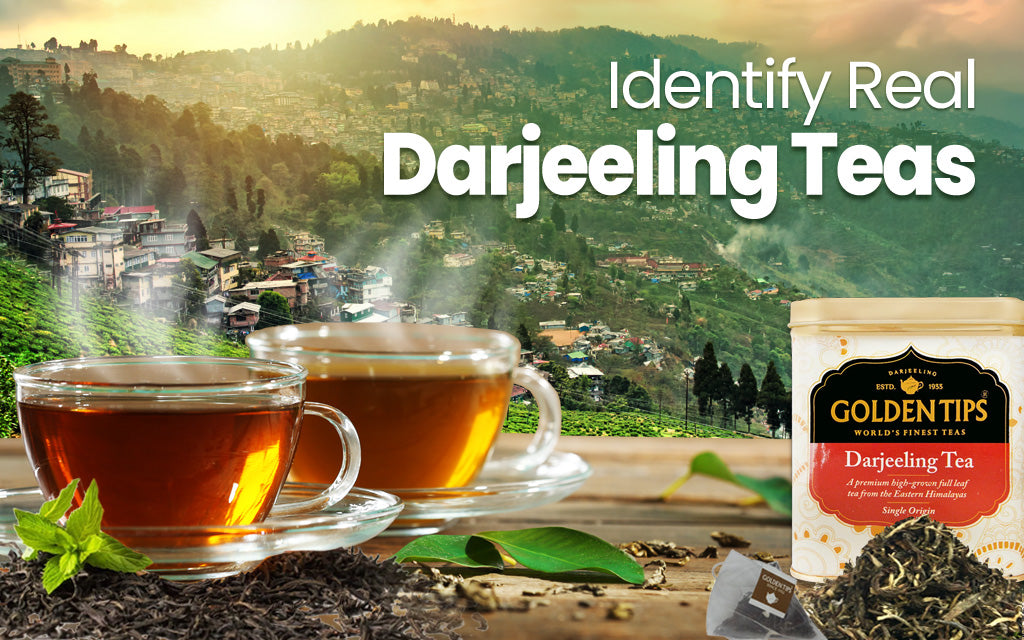
How to Buy Authentic High-Quality Darjeeling Tea
Darjeeling tea is extremely popular, and people drink it the world over. Unfortunately, there is no shortage of people passing off fake tea as Darjeeling Tea and cheating unaware customers out of their hard-earned money.
As a result, many people don’t experience the authentic flavor of Darjeeling tea and end up discarding it. So how can a novice tea connoisseur select authentic Darjeeling tea without being cheated?
The Gardens
Darjeeling tea is exclusively farmed in 87 tea estates in a hill station of the same name. Tea growers take care to only use organic methods of production. As a general rule of thumb, tea that is grown in Darjeeling is given the name “Darjeeling Tea”. Most Darjeeling teas follow a nomenclature that must be followed. Vendors don’t just name their tea “Darjeeling” and call it a day.
It must be followed by a name that precisely indicates the garden: It could be Dooteriah, Puttabong, Badamtan, and Castleton. However, some vendors promise the sun and sell sand – meaning, they will copy this nomenclature in hopes of scamming customers.
Study the Leaves for Authenticity
This brings us to an important point: tea leaves. The general rule is that the tea leaves must not be broken. Most vendors name their tea based on the condition of the leaves.
There are 4 groups of leaves:
Whole Leaves with the following subgroups:
- SFTGFOP – Super Fine Tippy Golden Flowery Orange Pekoe
- FTGFOP – Fine Tippy Golden Flower Orange Pekoe
- TGFOP – Tippy Golden Flowery Orange Pekoe
- GFOPO – Golden Flower Orange Pekoe
- FOP – Flower Orange Pekoe
Broken Leaves with the following sub-categories:
- FTGBOP – Fine Tippy Golden Broken Orange Pekoe
- TGBOP – Tippy Golden Broken Pekoe Orange
- FBOP – Flowery Broken Orange Pekoe
- BOP – Broken Orange Pekoe
Fannings with the following sub-categories:
- GFOF - Golden Flowery Orange Fannings
- GOF – Golden Orange Fannings
For obvious reasons, the first group (whole leaves), are of higher quality. They stay true to the taste and history of Darjeeling Tea.
Tea vendors utilize the last two categories to flavor teas or for a sachet of teas.
The Tea Board
Owing to the huge influx of fake tea being passed off as Darjeeling Tea, the Indian Tea Board framed new rules that require traders to enter information about their tea before selling it. Furthermore, the India tea board also states that random samples could be collected from tea stock to ascertain whether they are indeed what they claim they are.
To prevent fake teas being sold, the Tea Board now placed the “Darjeeling Logo” on each tea packet, which ascertains the authenticity and purity of Darjeeling. The Darjeeling Logo means that what you’re getting is 100% pure. This is great news for buyers because it’s simple enough to search for a logo than to send it to a lab for testing!
Buy Your Darjeeling Tea Today!
Click here to purchase authentic Darjeeling Tea. This is your opportunity to get your hands on 100% authentic Darjeeling Tea sourced straight from the tea estates of Darjeeling, India.
Suggested Readings:
- WHY GOLDEN TIPS DARJEELING TEA IS BEST
- 7 HEALTH BENEFITS OF DARJEELING TEA
- ALL YOU NEED TO KNOW ABOUT DARJEELING FIRST FLUSH TEA
- WHY SHOULDN’T DARJEELING BE EVERYONE’S CUP OF TEA?
- HOW TO MAKE THE PERFECT CUP OF DARJEELING TEA
- DISCOVER YOURSELF WITH DARJEELING TEA
- BEST DARJEELING TEAS WITH MILK
- Why Darjeeling Tea Is Called the Champagne of Teas























